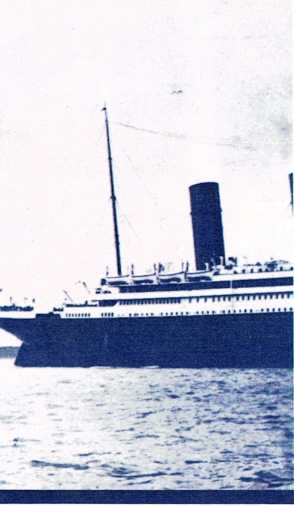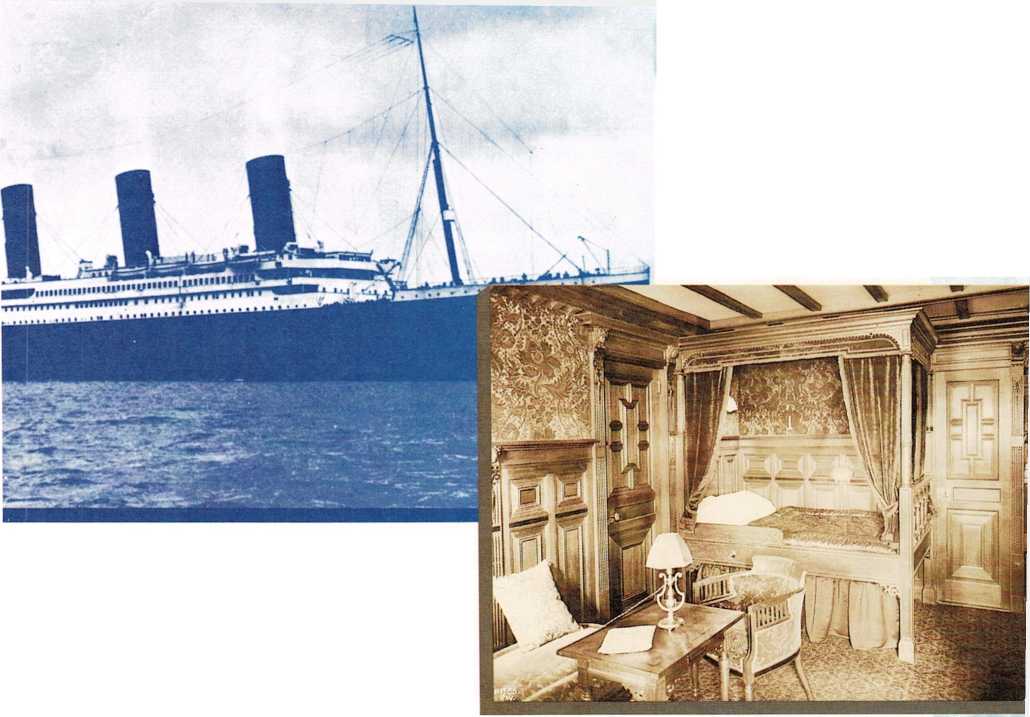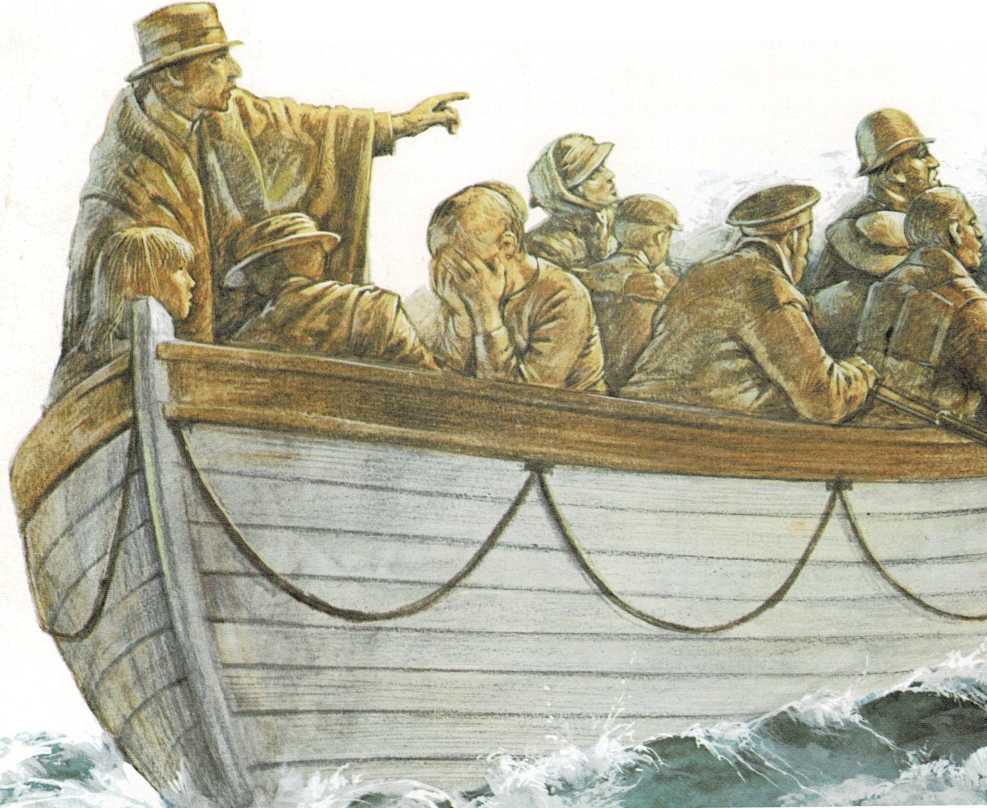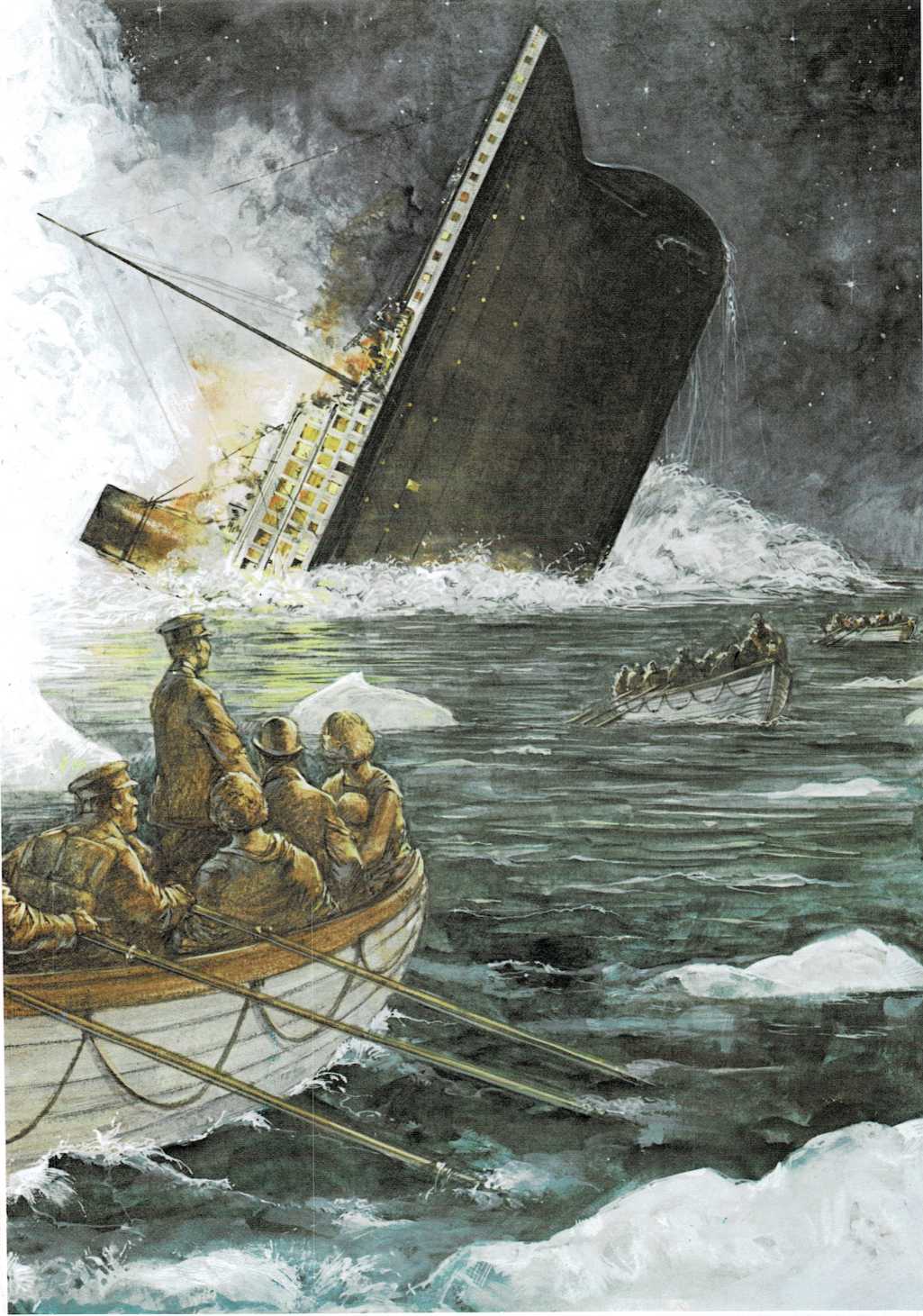The “unsinkable” ship
On a bright, clear, and cold night in April, 1912, a sleek, giant ship
plowed through the waters of the North Atlantic. The ship was moving at
a speed of about twenty-two knots (25 miles or 41 kilometers) an hour.
This was too fast, for there had been many warnings by radio that the
water ahead was dotted with icebergs.
The ship was named Titanic, a word that means \”huge.” It was
well-named, for it was the largest ship in the world—882.5 feet (269
meters) long. It was the kind of ship known as a luxury liner, a kind of
floating hotel. It contained hundreds of beautiful rooms for passengers,
as well as game rooms, dining rooms, and a gymnasium.
The Titanic was a brand-new ship. In fact, this was her first voyage.
People said she was unsinkable. The builders had divided the lower part
of the ship into sixteen watertight compartments. Even if as many as
four of these should fill with water, the air in the others would keep
the ship afloat. \”God Himself could not sink this ship,” a member of
the crew had boasted before the Titanic sailed.
The Titanic was sailing from Southampton, England, to New York City.
All together, counting passengers and crew, there were more than two
thousand people aboard. As the brightly lighted ship sped through the
night,

This is the Titanic as it left England at the start of its
first—and only—voyage.

The Titanic was a luxury liner. It had hundreds of beautiful
passenger cabins like this one.
most of those on board were asleep in their cabins, confident of their
safety.
A little before midnight, a sailor on lookout duty sighted a large
iceberg in the ship’s path. He picked up the phone to the bridge, the
place from which the ship was steered.
\”Iceberg! Right ahead!”
At once, the officer on duty ordered the steersman to make a sharp turn.
For a moment, it seemed as if the ship must crash into the iceberg.
Then, at the last instant, the ship veered away. It passed the towering,
jagged mass of ice so closely that anyone standing on deck might have
reached out and touched it.
But as the Titanic slid past the iceberg, there was a faint grinding
noise. The ship seemed to shudder slightly.
Many passengers were awakened by the noise and the jar. Others, still
awake, heard the sound and felt the jar. Some went out on deck to see
what had happened.
The Titanic’s captain, a white-bearded man named Edward Smith, rushed
to the bridge from his cabin nearby. Quickly, he ordered men to check to
see what damage had been done. They found that the iceberg, hard as rock
and sharp as a knife, had sliced a gash three hundred feet (90 meters)
long in the ship’s bottom. Water was pouring into six compartments. The
men looked at one another in shock. There was no doubt—the Titanic
was going to sink!
The captain issued orders. The ship’s radio operator was told to send
out signals for help. Members of the crew hurried down the ship’s
corridors, waking passengers and helping them into life jackets. Most
people were a bit anxious, but there was no panic. They were not told
that the ship was going to sink— most of them wouldn’t have believed
it anyway.
The crew uncovered the lifeboats and made them ready. But there was a
terrible problem. There were only enough boats for about half the people
aboard.
According to the law of the sea, women and children were put into the
lifeboats first. Husbands kissed their wives good-by, fathers kissed
their children. Many women refused to get into the boats, not wishing to
leave their husbands. Some men went, members of the crew and others who
could row the boats. Many people were left aboard, but they still
thought that everyone would be saved. Help was surely on the way. And
besides, the Titanic couldn’t really sink—could it?
As the lifeboats were lowered into the black, cold water, a ship was
seen on the horizon, less than twenty miles (32 kilometers) away. Help
was at hand! At once, signal rockets were fired. They streaked up into
the sky to explode with a bang and a flash of white stars.
But there was no reply from the other ship. Nor was there any response
to the distress signals sent out by radio. Months later, it was learned
that this ship, the Californian, had stopped for the night because of
the ice. Her radio operator, who had been on duty for more than fifteen
hours, went to bed only twenty minutes before the Titanic hit the
iceberg.
The lifeboats began to pull away from the Titanic. Everyone now knew
that the ship was indeed sinking. Its bow, or front, was much lower in
the water than the stern, or rear. Slowly, the stern rose into the air.
Many of the people left on board jumped into the icy water, hoping to
swim to a boat or find a piece of floating wreckage to which they could
cling.
Minutes dragged by while the people in the boats stared, unbelieving,
too shocked and stunned even to cry. The bow of the ship was now
underwater. The stern was lifting ever higher. The water around the
sinking ship was filled with floating objects—chairs, tables,
shuffleboard sticks . . . and people swimming for their lives.
Slowly, the Titanic’s, stern lifted until it was pointing straight up
at the sky. Then, gently, it sloped back and the ship slid beneath the
surface. With a last swirl, the water closed over the \”unsinkable”
ship.
A few—a very few—of those who had jumped overboard, or had been
washed
overboard as the ship went down, managed to reach a boat. Many people
were trapped on the sinking ship. Others died in the icy water.
From the time it grazed the iceberg, the Titanic had taken just two
hours and forty minutes to sink. Now, for more than another hour and a
half, the people in the boats fought to stay alive. It was bitter cold,
and many were only half dressed. Most were soaked to the skin. A few
died, of shock and cold.
Finally, at four o’clock in the morning, with the sun rising over a calm
sea dotted with floating icebergs, the ship Carpathia arrived. She had
steamed fifty-eight miles at top speed. Quickly, the frozen, stunned
survivors were taken aboard. There were only 705 of them. Some 1,500
people had died in the disaster— victims of the sea.



